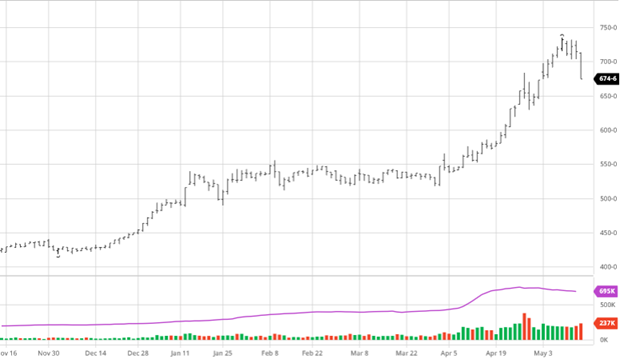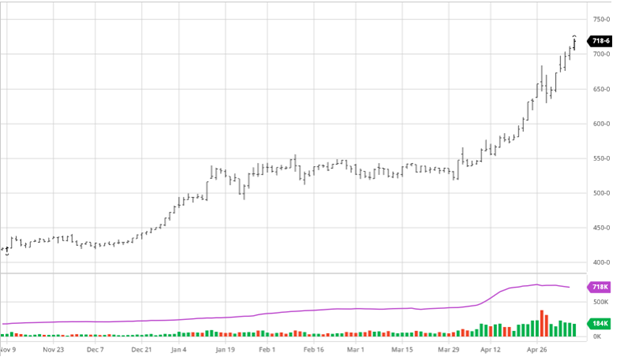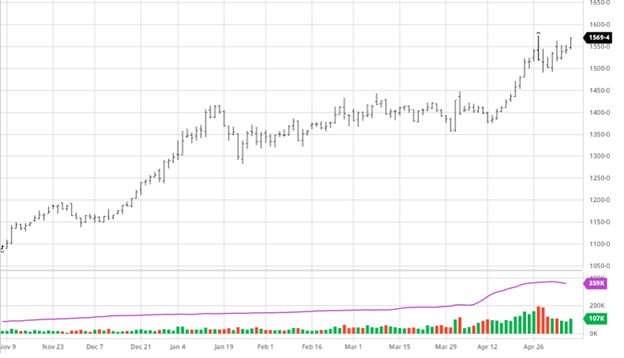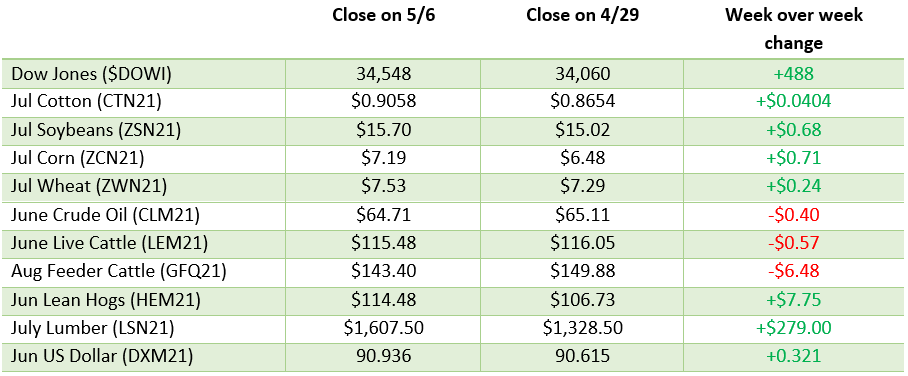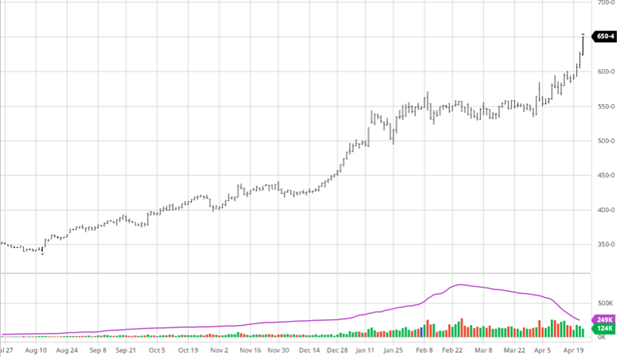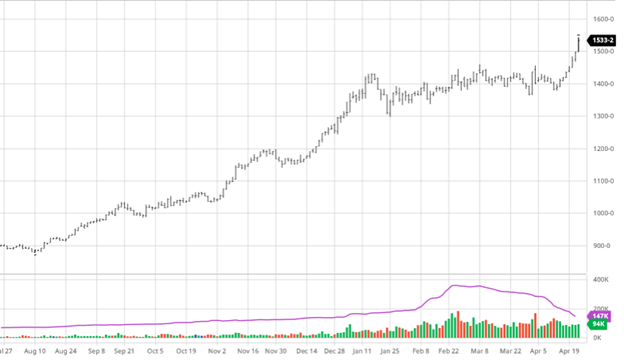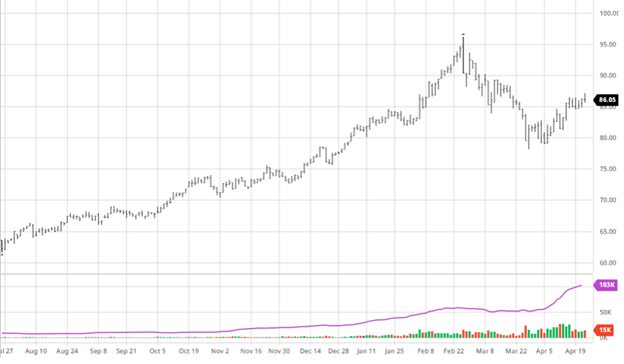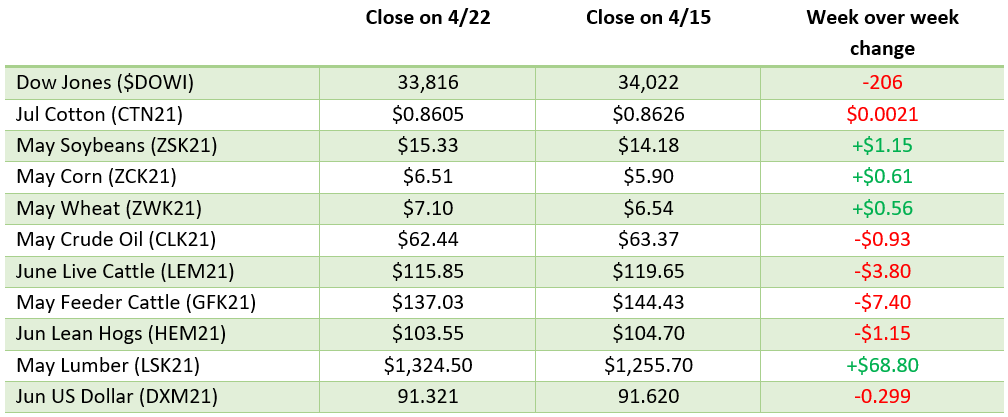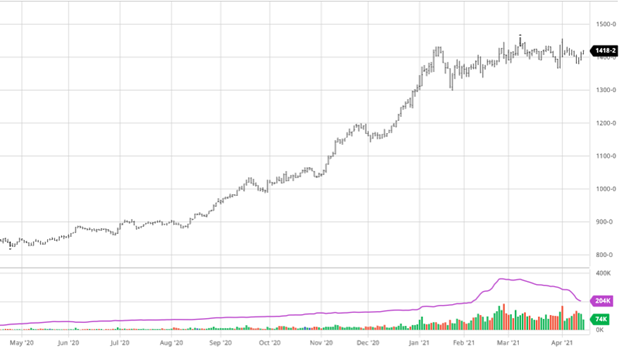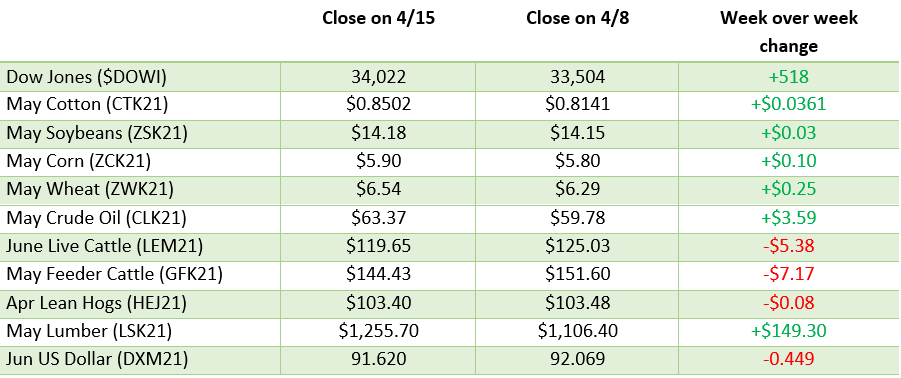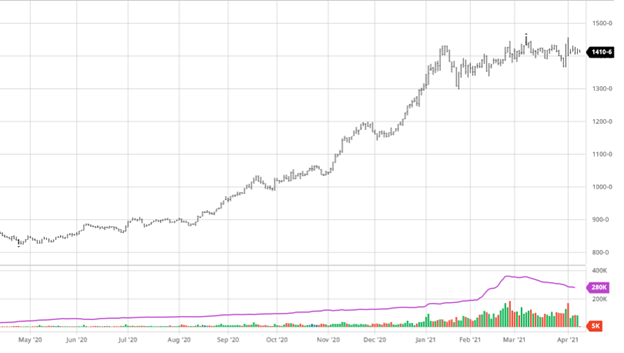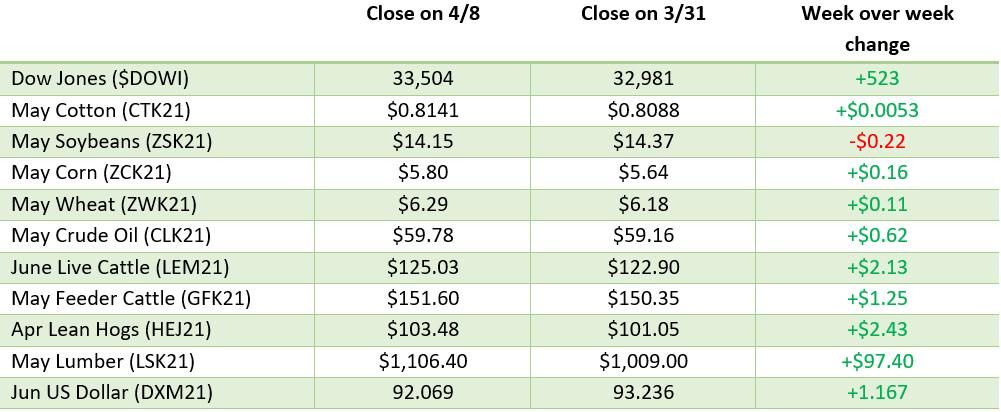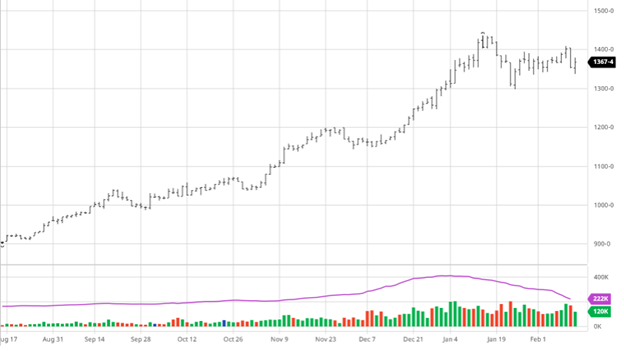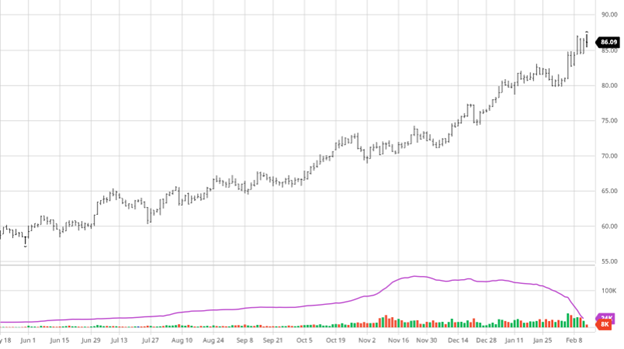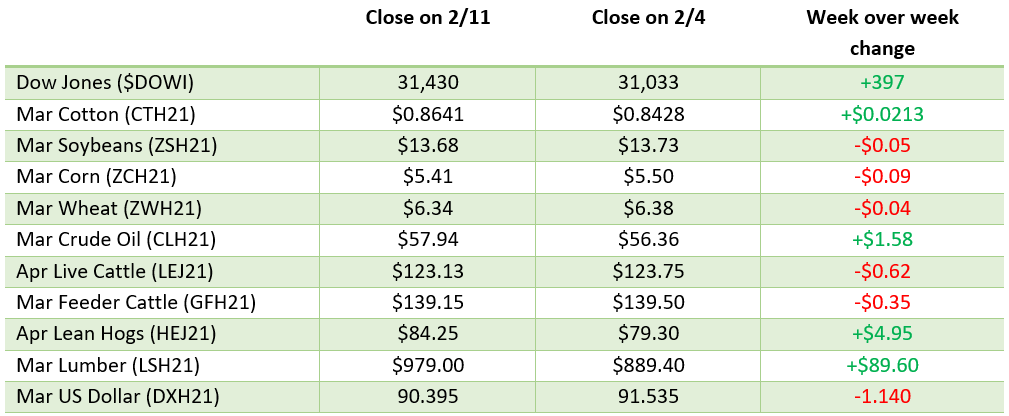
Volatility continued this week as the market suffered small loses week over week. Corn planting was seen at being 95% planted this week with the first crop condition rating of the year at 76% g/e. Early yield estimates from Barchart.com have national US corn yield at 173.2 BPA for a total yield of 14.4 billion bushels. This implies 90.5 million acres planted with a 92% harvest rate. These numbers would lead to shrinking US ending stocks for 21/22 – NOTE these are just estimates and it is very early in the process.
This weeks volatility was a classic example of a news driven market. One day weather was the main price mover and another outside forces such as metals and the USD pulled markets down across the board. Old crop corn export sales this week were strong coming in at 531.1 tmt and new crop sales were 439.5 tmt. Both of which are solid numbers where old crop sales were better than expected while new crop were within expectation.


Contrary to Corn, Soybeans made gains on the week. Planting was seen as being 84% completed at the onset with no crop conditions being reported just yet. World veg oil prices rallied during the week pulling beans up with it while corn struggled. With US exports to China lagging in recent weeks, the bullish stance on beans continues to be robust. Should buying resume, any and all purchases will help the export numbers and further be supportive for the market. This week’s exports were within expectations for both old crop and new crop with new crop leading the way with 180.3 tmt.


Crude oil continued its gains of recent weeks reaching the highest price in 2 ½ years. The demand for gas continues to grow as lockdowns ease and summer travel, both by cars and air, begins to ramp up. OPEC announced they will up production again in July. While a bearish on the surface it would seem additional increases will be needed to slow this bull. Optimism about Europe’s reopening along with the continuation of good news in the US on covid vaccines and reopening of states has been the main driver. US crude oil inventories were also lower this week than the 5 year seasonal average showing the demand is there.
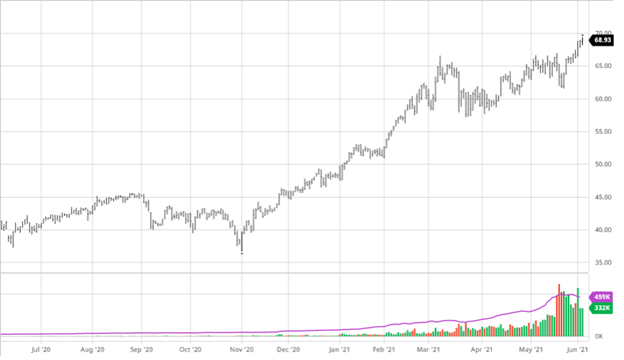

Dow Jones
The Dow gained on the week as it strung together several days of small gains with only small pullbacks. The craziness of the reddit trade returned this week with $AMC, $GME and $BB having wild bouts of volatility. Other indexes finished lower for the week as Nasdaq struggled on Thursday.
JBS
JBS was the victim of a recent cyber attack that caused them to have to shut down many plants. All were up and running by the end of the week but between this and the Colonial hack we may begin seeing more of these targeted attacks effect US consumers.
Lumber
Check out our recent post about the lumber market and what all has been going on. Lumber has leveled off here recently but it is still well ahead of where it was before the run up.
Podcast
Check out our recent podcast with Dr. Greg Willoughby: We’re talking with Greg in the new episode about being a “plant doctor”, weather patterns, GMO & organic produce, crop history, technical advances, level 201 education on agronomy, the agronomy equation, Helena Agri, soil biology, American v European agriculture, Greg’s early background in livestock, and the advancement of native plants to modern produce.
https://rcmagservices.com/the-hedged-edge/
US Drought Monitor
The map below shows this week’s drought conditions across the US. Parts of southern Kansas and northwest Oklahoma got relief this week while parts of North and South Dakota may receive much needed rain in the next week.

PRICES

Via Barchart.com


